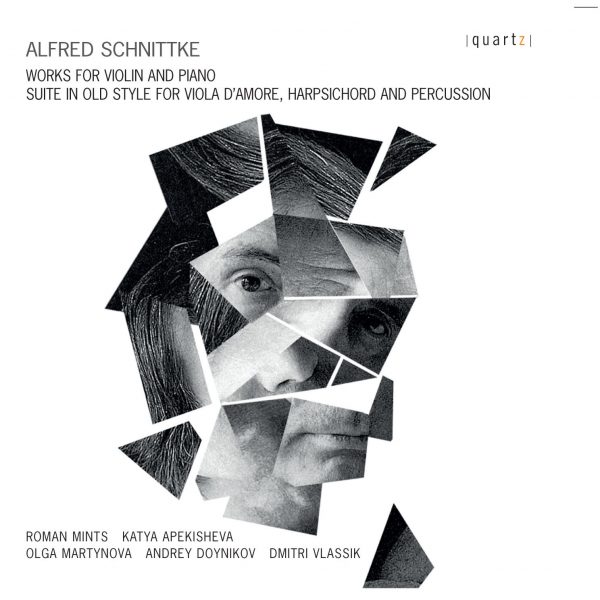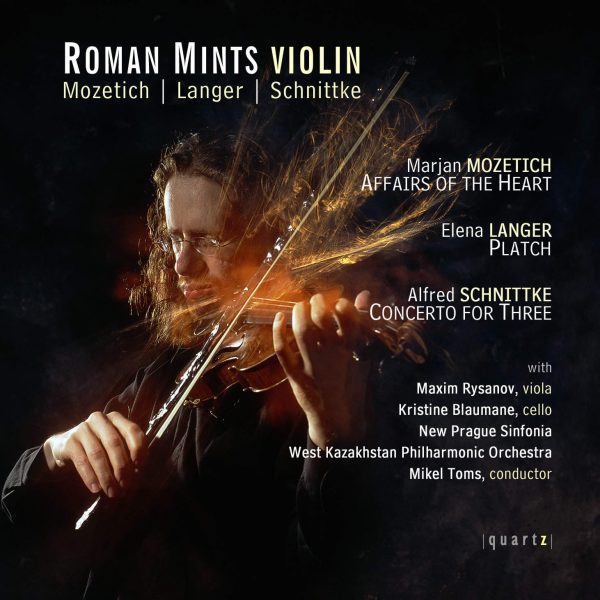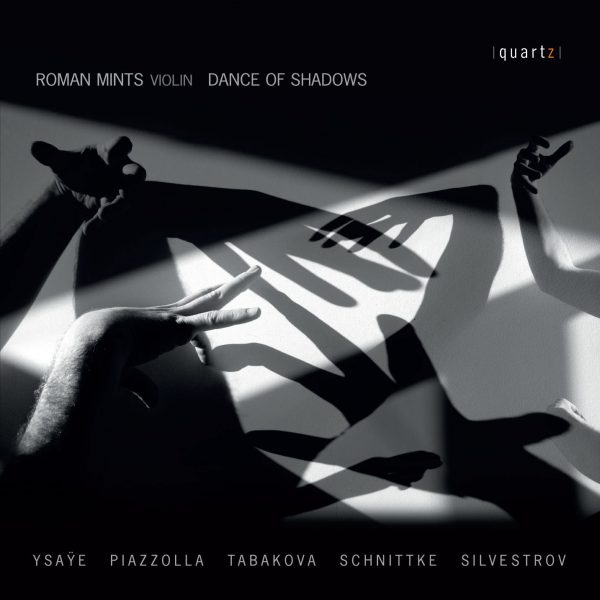Hindemith: Complete Works for Violin & Piano
Price range: £7.99 through £14.99
Recorded for the first time on one album, this release features Hindemith’s complete works for violin and piano and the rarely recorded “Kleine Sonata” for Viola D’amore and piano. Hindemith’s reputation as a master composer, viola virtuoso and dominant pedagogue — who, being able to play practically every standard instrument (and a few non-standard ones), expected the same from his students — has tended to obscure the fact that he first came to attention not as a composer or violist but as a violinist. Roman Mints has had a lifelong love of the works of Paul Hindemith, which began when he was a young violinist, studying in Moscow in the 1980s. He says “This music, written not just before I was born but closer to the time of my grandparents’ birth, felt completely contemporary, and daringly advanced in its sound — and not just to me, as it turns out: 30 years on, Hindemith is still regarded by concert programmers as too difficult for the wider public. I put Sonata in D on the stand. I was gripped by the first subject, constructed from seconds and sevenths, marked to be played ‘with stony defiance.’ I was never the same again and he became my window into contemporary music.”
https://youtu.be/9n4HT5t6qGo&w=640
https://youtu.be/xsndUEmQB1s&w=640
About This Recording
All musicians have particular pieces which hold a special meaning for us: not necessarily our “favourites”, but those which have played a defining or directing role in our lives. For me there is one such piece I have returned to repeatedly over the past 30 years.
I wasn’t really meant to become a violinist: there was nothing that made it likely. None of my family played, except a self-taught great-uncle, who I never knew. When my mother’s friend, our neighbour, took her son to enrol in music school, my mother asked if she would take me along: maybe they’d let me join too. At that time in children’s music schools those who were thought to have any kind of prospects were assigned to the piano, the others randomly given other instruments, unless the child had a particular desire to play something. I was one such: asked what I wanted to play, I said the violin. Before then I’d only seen a violin on television. When my mother was sure I hadn’t been given the violin simply because I was completely talentless, her attitude was: “If it’s worth doing, it’s worth doing well”, and, arming herself with pen and notebook, began coming with me to all my lessons, taking notes and writing down my homework tasks. She kept this up, despite my teenage entreaties, and came along to my lessons until I left the country.
At the same time she built up a collection of sheet music for me to play. This wasn’t so easy in Soviet days – the best things were only to be found in second-hand bookshops, and my mother would snap up pretty much anything with a violin part, mainly of course sonatas and other pieces for violin and piano. And then one day she brought back a score with a peculiar name on the cover: Hindemith.
I put the Sonata in D on the stand. It was the first time I had seen a score which didn’t say “major” or “minor”: just “in D”. It seemed very mysterious and interesting. I was gripped by the first subject, constructed from seconds and sevenths, marked to be played “with stony defiance”. As they say, I was never the same again. This music, written not just before I was born but closer to the time of my grandparents’ birth, felt completely contemporary, and daringly advanced in its sound – and not just to me, as it turns out: 30 years on, Hindemith is still regarded by concert programmers as too difficult for the wider public. I should mention that at this time my repertoire consisted of Soviet editions of Handel’s sonatas (with piano accompaniment, naturally), and Wieniawski’s violin concerto. By comparison, Hindemith was from another planet. And that is how he became my window into contemporary music.
Needless to say, I wasn’t up to playing this music properly at the time, and I had to return to my exercises, to Wieniawski and Vieuxtemps, setting Hindemith aside.
About seven years later I returned to the sonata, by which time I was already living and studying in London. By now I was much more familiar with intricate contemporary music, and I suddenly began to hear a completely different side of Hindemith, namely his romanticism. The exaggerated emotions, the endless German directions like Schumann’s (Hindemith’s “with stony defiance”, Schumann’s “with burning and passionate feeling”), the near-quotation of Schumann’s A minor sonata – no coincidence, since Hindemith was a violinist; and now I began to play it in a completely new way, discovering kinds of beauty in the sonata which had been completely hidden from my 13-year-old self. Behind the angularity and dissonance lay palpitating passions. And that is how Hindemith became my window into Romantic music.
I liked to open my concerts with this sonata, finding in it something so personal and close to my heart that it overcame my nerves: I usually feel a bit edgy at the start of a concert. Over the years I decided to learn Hindemith’s other sonatas, as well as the sonata for viola d’amore with its entirely magical second movement. I found the ideal playing partner, my old friend Alexander Kobrin, whose style in this music can’t be bettered. We prepared a programme and played it in many places.
After a few years, we decided to make a disc of all Hindemith’s works for violin and piano. Listening to 2the final cut, I realised we had drawn the portrait of a man whose wildness hid a tender side, whose severity concealed humour, and behind whose crustiness there lay a capacity for ecstasy. I began to understand how he had resonated with me as a 13-year- old, and why he continues to hold a special place in my heart. And that is how Hindemith became for me a window into my own self.
Track Listing
-
SONATA FOR VIOLIN & PIANO IN E FLAT, Op.11 No.1 (1918)
- I Frisch (4’36)
- II Im Zeitmaß eines langsamen, feierlichen Tanzes (4’52) SONATA FOR VIOLIN & PIANO IN D, Op.11 No.2 (1918)
- I Lebhaft (6’55)
- II Ruhig und gemessen (7’41)
- III Im Zeitmaß und Charakter eines geschwinden Tanzes. Frisch und stets bewegt (5’04) SONATA FOR VIOLA D’AMORE & PIANO, “KLEINE SONATE”, Op.25 No.2 (1922)
- I Mäßig schnell. Lustig (1’35)
- II Sehr langsam (7’33)
- III Sehr lebhaft (3’42) SONATA FOR VIOLIN & PIANO IN E (1935)
- I Ruhig bewegt (3’32)
- II Langsam – Sehr lebhaft (6’25) TRAUERMUSIK (1936)
- I Langsam (3’25)
- II Ruhig bewegt (0’45)
- III Lebhaft (1’07)
- IV Sehr langsam (1’50) MEDITATION, FROM THE BALLET “NOBILISSIMA VISIONE” (1938)
- Meditiation, from the Ballet “Nobilissima Visione” (3’58) SONATA FOR VIOLIN & PIANO IN C (1939)
- I Lebhaft (2’27)
- II Langsam (4’25)
- III Fuge. Ruhig bewegt (7’12)




